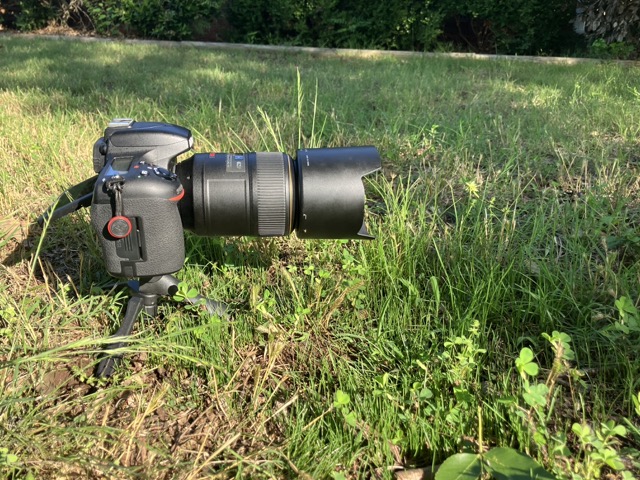
This photo is mostly the result of some simple experimentation. A proof of concept, perhaps, to see if an idea I had would actually work out. In the end I’m not entirely sure it did, but at the same time, not altogether convinced it did not. If nothing else it was a fun picture to take and a good chance to come away from a walk around Theta Pond on the OSU campus with a cool picture and a bit of a story to tell, which means the whole exercise was time well spent. The trick here, which is the same as that on many a close-up photo, lies in the depth of field: how to get the right aperture, along with the proper distance from the subject, in order to get the shot I was aiming for. In this case there was a bit of an additional wrinkle added to the mix in that the subject, as it were, could be many things. Should it be just one purple flower? Perhaps two? What about the main portion of the plant or, perhaps, one of the unfolded flowers? What about using a small aperture so the entire plant? Lots of options to consider, for sure.
I ended up going with a pretty simple, perhaps obvious, solution: just use the most colorful part of the flower and go from there. I shot at f/8 to get a nice mix of subject sharpness and background blur, even though that meant most of the plant besides the purple petals was not in focus. It didn’t really matter to me after I decided to use the flowers as the subject, but what did matter was the background: I wanted to position the plant (or, rather, myself) such that everything behind it helped accentuate it while also adding some fun context. The bright white blur is one of the fountains in Theta Pond, and the dark vertical line is a cypress tree at the eastern edge of the water.
In some ways this is a bit of a classic Weekly Fifty composition: it’s certainly not the first time I’ve taken a picture at Theta Pond in the afternoon, of a bit of flora while facing west with a fountain in the background. Is it a complicated setup? Nope, not at all. But it’s fun style of picture to take, and it brings a smile to my face–not only while taking it, but viewing it afterwards.




